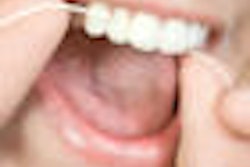Dear Hygiene Insider,
Medical costs are lower for people with diabetes who receive treatment for periodontal disease, according to one of the first large-scale studies of its kind, presented at the recent American Association for Dental Research (AADR) annual meeting.
The research, which was funded by United Concordia, found that treating periodontal disease in diabetics saved the healthcare system an average of $1,814 per patient in a single year.
Read more in this latest Hygiene Insider Exclusive.
In other Hygiene Community news, a dental hygienist training program in California abruptly shut down in February over questions of accreditation, leaving its students -- many of whom had prepaid up to $45,000 for the three-year program -- wondering what to do next. Read more.
And bacteria in a water line at a dental office in Italy is being blamed for the death of an 82-year-old woman who contracted Legionnaires' disease just days after undergoing dental treatment, according to a case report in Lancet.
Also, what hygienists are allowed to do and where they are allowed to do it would change in a number of ways under proposed bills being considered by states across the U.S. The debate heated up last month in Connecticut during a hearing before the state Public Health Committee.
In business news, the average individual already counts toothbrush and floss among their tools for maintaining a healthy mouth. A new company based in Massachusetts is hoping that its light-based intraoral device, which targets pathogenic oral bacteria, will be added to that list. Click here.
And the U.S. Food and Drug Administration has issued a warning to consumers that certain electric toothbrushes can break during use and cause serious injuries, including chipped or broken teeth, cuts to the mouth and gums, and injuries to the face and eyes.
Meanwhile, C3 Jian, a California biotech company, wants to arm dentists with a "smart bomb" that could eliminate S. mutans bacteria in the oral cavity. And that's just the first step in the company's strategy to help dentists assess risk and prevent and manage caries. Read more.
On the clinical front, preliminary data from a new study presented at the AADR meeting showed that periodontitis and oral hygiene are not associated with the risk of developing bisphosphonate-related osteonecrosis of the jaw.
Meanwhile, a study in the March Quintessence International examined the role of salivary pH in abusers of methamphetamine and found that salivary quality may play a more important role in meth mouth than previously considered.
And a new survey conducted by the University of Michigan C.S. Mott Children's Hospital has found that many children in low-income families are consuming more than the recommended amount of juice, putting them at greater risk of developing early childhood caries.
Also, an injectable contraceptive administered every three months may be putting women who opt for this method at increased risk for periodontal disease, according to a new study in the Journal of Periodontology.
Finally, research presented at the 12th Annual Spring Meeting on Cardiovascular Nursing showed that oral health is critical for congenital heart disease patients. Click here to read more.



















